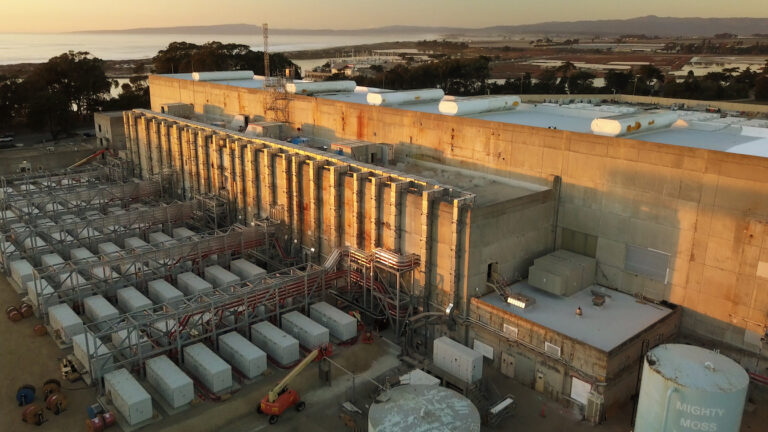Lots of PR coming out of the golden state regarding great strides in building battery capacity required by the green dream of 100% carbon free electrical power.
Batteries briefly became the biggest source of power in California twice in the past week.
The first time — Tuesday last week around 8:10 p.m. PT, according to GridStatus.io — batteries reached a record peak output of 6,177 megawatts. For about two hours, that made electricity generated earlier and stored in batteries the single largest source of power in the Golden state, eclipsing real-time production from natural gas, nuclear, renewable sources like wind and solar, and all other sources of energy.
It happened again on Sunday evening, this time for a few hours around 7:10 p.m. PT, per data from GridStatus.io. In that instance, which broke Tuesday’s record, batteries reached a peak output of 6,458 megawatts.
Battery storage has become a key part of the push to produce more electricity using renewable sources. By connecting huge, rechargeable batteries to power grids, power utilities can store energy generated during the day by solar panels and wind turbines.

Augmentation at the Vistra Moss Landing Energy Storage Facility in California has been completed, with the world’s biggest battery energy storage system (BESS) now at 400MW / 1,600MWh. The batteries are housed in repurposed gas turbine halls. Image: Vistra Energy.
Note the BESS ratings for power (MW) and energy output (MWh). In this case, Moss Landing has a maximum power of 400MW and a duration of 4 hours, or 1600MWh. Such a factor of 4 seems typical for large scale BESS in California. It also means that for a single peak hour demand, Moss Landing can only supply 400MW for that hour. If more energy is needed, it will have to come from somewhere else.
Then in April we have the news from Gov. Newsome’s office California Achieves Major Clean Energy Victory: 10,000 Megawatts of Battery Storage.
Let’s Apply Some Context to These Cheerful Reports
The California Energy Commission produced its electricity forecast end of 2022:
Note the graph is projecting hourly electricity demand, which peaks during hour 19. Output levels approach and then exceed 50,000 MW demand that hour, or 50k MWh.
Cal matters raises concerns about state policy to phase out ICE vehicles in favor of EVs.
Again demand requires from the grid 50k MW per hour in 2022 with less than 1% for charging EVs. That is projected to go 10 times higher in 13 years.
Summary
The excitement is about batteries supplying 6500 MW for a couple of hours when the peak demand is 50,000 MW. The glorious achievement is building battery capacity up to 10,000 MW. It doesn’t add up.


One comment